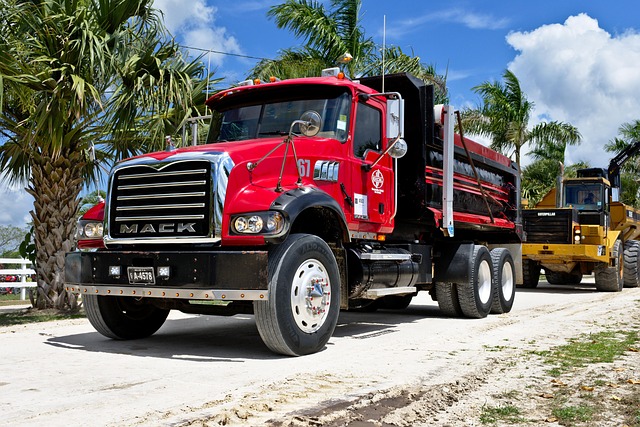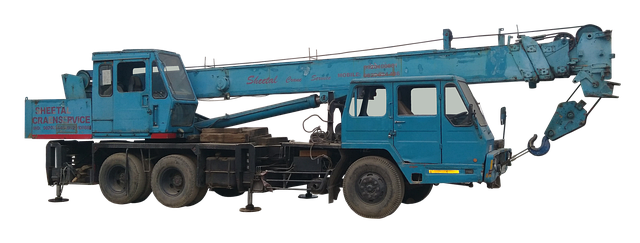Trucking workers' compensation is an essential safety net for drivers in the logistics sector, covering medical expenses and wage replacement for work-related injuries. Employers and employees benefit from understanding their rights and responsibilities under this legislation, which requires a delicate balance between comprehensive protection and cost management. Successful strategies include risk management programs with preventive measures, advanced technology for fleet monitoring, and proactive health and wellness initiatives, ensuring affordable coverage while enhancing worker satisfaction and retention.
In the dynamic landscape of trucking, balancing affordability with robust employee protection is a delicate act. This article explores the intricate web of trucking workers’ compensation, serving as a foundational guide for ensuring safety without breaking the bank. We delve into the challenges of cost management while upholding employee welfare, offering strategic insights to enhance affordability without compromising safety. Through case studies, we present successful models that exemplify comprehensive worker protection in action, showcasing practical approaches for both industry stakeholders and policymakers.
Understanding Trucking Workers' Compensation: A Foundation for Protection

Trucking workers’ compensation is a cornerstone of robust employee protection in the logistics industry. It serves as a safety net for drivers who face unique risks on the road, including long hours, heavy loads, and unpredictable weather conditions. This form of insurance ensures that truckers receive medical coverage, wage replacement, and other benefits in case of work-related injuries or illnesses. Understanding the intricacies of trucking workers’ compensation is crucial for both employers and employees to ensure a fair and supportive system.
By comprehending their rights and responsibilities under this legislation, trucking professionals can navigate potential challenges more effectively. Employers must stay updated on compliance requirements to provide adequate protection without undue financial burden. Conversely, employees should be aware of the process for filing claims, understanding the steps necessary to access the benefits they’re entitled to. This mutual knowledge fosters a culture where safety and well-being are prioritized, striking a delicate balance between affordability and comprehensive employee protection.
The Challenge of Balancing Costs and Employee Welfare

In the realm of employee protection, especially within the trucking industry where worker safety is paramount, balancing affordability with comprehensive coverage presents a significant challenge. On one hand, ensuring that trucking workers compensation plans are robust enough to cover various risks and accidents is crucial for the well-being of employees. This involves providing adequate medical coverage, disability benefits, and financial support during periods of injury or illness.
On the other hand, managing the costs associated with these protections is essential for businesses’ financial sustainability. High worker compensation premiums can impact profitability, especially for smaller trucking companies. Therefore, finding a balance between offering competitive and comprehensive insurance plans and maintaining affordable rates is a delicate task that requires careful consideration of various risk factors, industry standards, and legal obligations.
Strategies to Enhance Affordability Without Compromising Safety

Many companies in the trucking industry strive to keep costs low while ensuring their workers’ safety, especially regarding worker’s compensation. A key strategy is to implement efficient risk management practices. By identifying and mitigating potential hazards through regular training and up-to-date equipment, businesses can reduce the likelihood of accidents, lowering insurance premiums over time. Additionally, employing advanced technology for fleet monitoring and driver assistance can enhance road safety without incurring significant expenses; modern systems offer real-time data analysis to optimize routes and driving behavior, ultimately reducing costs associated with fuel consumption and minimizing risks on the road.
Another approach is to foster a culture of proactive health and wellness programs. Investing in employee well-being through preventive measures like regular health check-ups, ergonomic equipment, and stress management workshops can decrease long-term workers’ compensation claims. These initiatives not only enhance trucking operations’ affordability but also contribute to happier and healthier workers, leading to improved productivity and retention rates.
Case Studies: Successful Models for Comprehensive Worker Protection

In the realm of employee protection, several case studies highlight successful models that balance affordability with comprehensive coverage, particularly in the trucking industry where worker’s compensation is a critical aspect. Many companies have adopted innovative strategies to ensure their trucking workers receive adequate protection without compromising financial stability. For instance, some employers implement risk management programs that focus on preventive measures, reducing the likelihood of work-related injuries. By investing in safety training, maintaining well-equipped vehicles, and fostering a culture of safety awareness, these firms minimize claims and, consequently, lower worker’s compensation costs.
Additionally, leveraging technology has been a game-changer. Telematics systems that track driver behavior and vehicle performance enable employers to identify potential hazards and implement targeted solutions. This data-driven approach allows for more precise risk assessment and tailored insurance policies, ensuring that workers receive protection while keeping premiums affordable. Case studies show that these comprehensive strategies not only benefit trucking companies but also enhance worker satisfaction and retention, creating a win-win situation for both parties.
In conclusion, balancing affordability with robust employee protection in trucking is a complex challenge. By understanding the fundamentals of trucking workers’ compensation, acknowledging the cost-welfare dilemma, and exploring strategic solutions that prioritize both safety and financial sustainability, businesses can create comprehensive worker protection models. Case studies highlight successful approaches, offering valuable insights for navigating this delicate balance. Moving forward, adopting innovative strategies and learning from industry best practices will be key to ensuring trucking workers receive fair compensation without compromising operational affordability.
